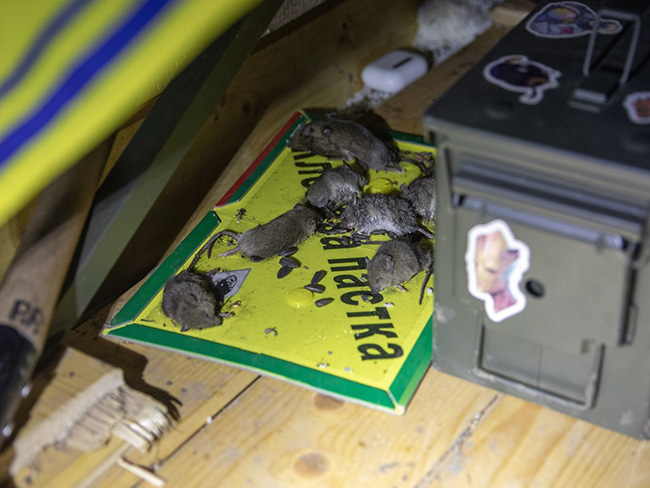President Zelensky knows that Western aid is in doubt now
It’s hard to ignore the sense of desperation in Ukraine’s corridors of power. Nearing two years since Russia launched its full-scale invasion, authorities in Kyiv maintain their long-standing entreaty to partners in the West: Deliver us more arms, more aid, more political commitments.
U.S. officials and their Western counterparts, as colleagues reported over the weekend, anticipate a lean year ahead, where Ukraine’s increasingly exhausted forces focus more on consolidating their defense, writes ‘The Washington Post’.
Last week, Pentagon officials came empty-handed to a monthly 50-nation coordinating meeting for Ukraine, with future U.S. money for arms and aid snared by domestic politics. On the front lines, reports indicate stocks of ammunition and artillery shells are running low for many Ukrainian units.
Looming far away from the battlefield is the political drama in Washington. House Republicans have already stymied the latest tranche of funding that President Biden is trying to allocate for Kyiv. Analysts believe Russian President Vladimir Putin is holding out for a potential return to power of former president Donald Trump, the likely Republican presidential candidate for the November election. Trump may scale back support for Ukraine and take a friendlier view of the Kremlin’s security concerns in Eastern Europe.
As colleagues reported, the Biden administration and European allies are working on a longer-term, multilateral plan aimed at warding against this scenario and future-proofing support for Ukraine. That includes pledges of economic and security assistance that stretch into the next decade, and may pave the way for Ukraine to get integrated into Western blocs like the European Union and NATO. Biden is set to unveil the U.S. plank of this strategy in the spring.
“The policy holds risks, including political ones, if Ukrainians begin to blame their government for stagnant front lines,” colleagues wrote. “Likewise, in Western capitals, officials are keenly aware that their citizens’ patience with funding Ukraine’s war is not infinite. Amid the planning, Washington also seems to be readying the argument that, even if Ukraine is not going to regain all of its territory in the near term, it needs significant ongoing assistance to be able to defend itself and become an integral part of the West….”
Experts contend that the Biden administration had a responsibility to avoid a spiraling confrontation with Russia. “More aid, sooner, would have been better — but there’s no guarantee it would have brought a decisive Ukrainian victory,” wrote Bloomberg Opinion columnist Hal Brands. “The best guarantee of that outcome would have been threatening direct military intervention, a strategy that virtually no one wanted to pursue because the risks were so obvious and, potentially, so severe.”
“Ukraine is a good deal for the United States,” NATO secretary Stoltenberg told ‘The Washington Examiner’ in an exclusive interview. “And most of the money the United States is providing to Ukraine is actually invested here in the U.S. — buying American equipment which we are sending to Ukraine.”
Meanwhile:
The frontlines of the war in Ukraine have become infested with rats and mice, reportedly spreading disease that causes soldiers to vomit and bleed from their eyes, crippling combat capability and recreating the gruesome conditions that plagued troops in the trench warfare of World War I, informs CNN.

A Ukrainian servicewoman, who goes by the call-sign “Kira,” recalled how her battalion was beset last fall by a “mouse epidemic” while fighting in as the southern Zaporizhzhia region.
The infestations are due partly to the change in seasons and mice’s mating cycle, but are also a measure of how the war has become static, after Ukraine’s counteroffensive was largely rebuffed by heavily fortified Russian defenses. Amid another harsh winter, mice are foraging along the nearly 1,000-kilometer (621-mile) frontline, spreading disease and dissatisfaction as they search for food and warmth.
“We had a cat named Busia, and at first she also helped and ate mice. But later there were so many of them that she refused. A cat can catch one or two mice, but if there are 70 of them, it’s unrealistic…”
Ihor Zahorodniuk, a researcher at Ukraine’s National Museum of National History, told CNN the mice infestations were partly because rodent reproduction peaks in the fall, but also because of the effects of the war itself.
“The winter crops sown in the fall of 2021 were not harvested in many places in 2022 and gave generous self-seeding. The mice that bred on it survived the very warm winter and went on to harvest a new crop,” he said. The war has also dispersed natural predators, allowing mice to propagate more freely.
As well as causing anxiety and disease among soldiers, mice also ravage military and electrical equipment. When working as a signalman and living separately from other fighting troops in Zaporizhzhia, Kira said mice “managed to climb into metal boxes and chew through wires,” disrupting communications.
“The mice chewed everything: Radios, repeaters, wires. Mice got into cars and chewed on the electrical wiring, so the cars wouldn’t run, and they also chewed on tanks and wheels,” Kira said. “The losses from the mice in our dugout alone amount to one million hryvnia [$26,500].”
Zahorodniuk stressed the damage can be critical, “as lost communication may cost lives.”
read more in our Telegram-channel https://t.me/The_International_Affairs

 12:05 02.02.2024 •
12:05 02.02.2024 •























